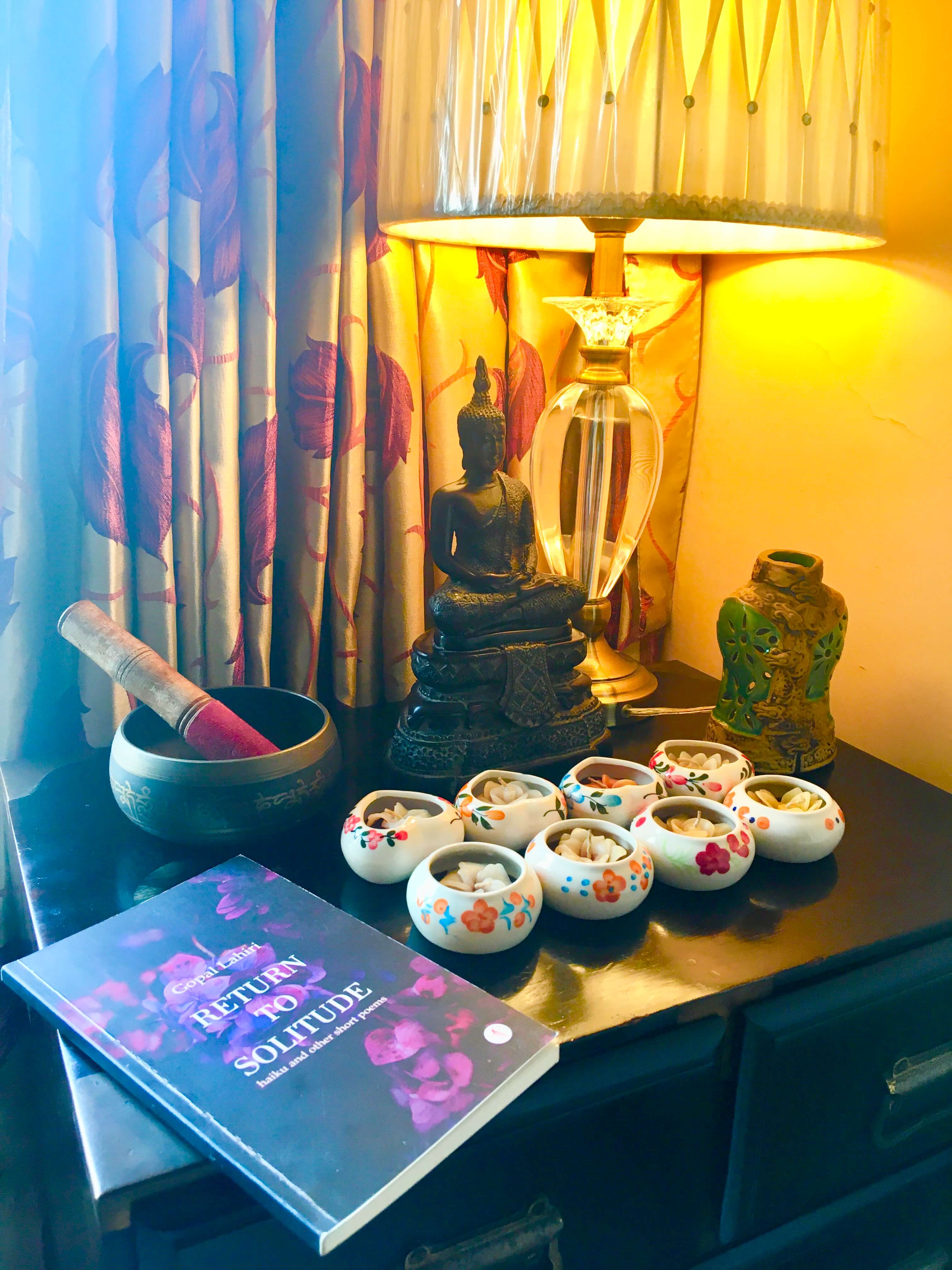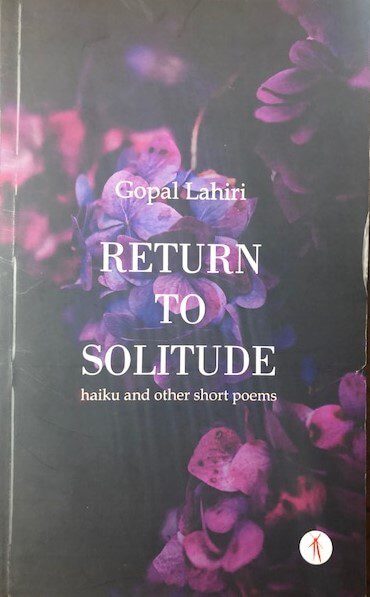Reading Time: 6 minutes
Urna reviews Gopal Lahiri’s Return to Solitude, exclusively for Different Truths.

Solitude, there’s no place like solitude.
From Plato to Edgar Allan Poe, and from Ralph Waldo Emerson to Rabindranath Tagore, philosophers, scholars, scientists, and psychologists through the centuries have emphasised enough on the need for solitude.
But look, let’s be honest. Edgar Allan Poe wasn’t attacked by 23 unread emails from his boss, urgently popping up in his electronic mailbox. And, Tagore never had to deal with 34 annoying Facebook notifications every day, right? “So, it was easy for them to talk about solitude, wasn’t it?”, a part of my mind reasons defiantly.
But look, let’s be honest. Edgar Allan Poe wasn’t attacked by 23 unread emails from his boss, urgently popping up in his electronic mailbox.
But before I go about answering this tricky question, let’s try and understand why is solitude important? And how and in what way, does solitude work on the human mind?
Let’s kickstart our discussion with our daily lives then. When we go to work, do what we must for a living, run around taking care of groceries and children, and go about our professionally and personally demanding lives, we gather a humongous body of macro and micro experiences.
Yet, this body of experiences is more like a jumbled, tangled, confused mass. And it is solitude that is needed to process through all these millions of daily experiences.
Yet, this body of experiences is more like a jumbled, tangled, confused mass. And it is solitude that is needed to process through all these millions of daily experiences. So that we can sift through and extract the meaning from all of these cumulative interactions and stimuli. And somewhere along the way, make sense of them and put them in perspective, as well.
This is exactly why Gopal Lahiri’s Return to Solitude (Haiku and Other Short Poems) doubles up both as an enchanting read as well as an essential life tool. A must have lifejacket from the technological and informational tsunami that is sweeping over our daily lives, as we speak.
And as you hold the book in your hands, like me, you too will be awed and attracted in equal measure, by its classy, nuanced cover design by Bitan Chakraborty.

And as you hold the book in your hands, like me, you too will be awed and attracted in equal measure, by its classy, nuanced cover design by Bitan Chakraborty. With the backdrop being black, the eye travels almost effortlessly towards the pink-tinged purple flowers exhibiting their elegance, in a demure, understated way. And the cover design sets the mood for what will unfold, within the pages of this book published by a renowned publisher from Kolkata.
But before we talk about the poetry inside, do make it a point to read the elegantly written foreword by the acclaimed bilingual poet, writer, editor, critic, translator, and author of 22 books, Gopal Lahiri himself, who tells us about short format poems like the haiku, the senryu, tankas and the entire genre.
Gopal Lahiri points out how the haiku “constantly evolves, both in Japan and from outside Japan, and is now more of a genre, than a fixed form of counting syllables…”
Gopal Lahiri points out how the haiku “constantly evolves, both in Japan and from outside Japan, and is now more of a genre, than a fixed form of counting syllables. It regularly sheds its skin of fluid syllabic pattern, making it equally fascinating and refreshing in three short lines (tercet).”
As for Gopal Lahiri’s voice, its sensitive, soothing, balm-like. Never harsh, never cutting and never landing too hard. And it is this softness and this sensitivity, that will grow on you, the reader, like bougainvillea tenderly spreading on lattice work. Blossoming into a garden, within the nooks of your soul.
With his partly meditative, partly introspective, and partly reflective voice, Gopal Lahiri will make you experience a kind of solitude that you will want to return to.
With his partly meditative, partly introspective, and partly reflective voice, Gopal Lahiri will make you experience a kind of solitude that you will want to return to. Symbolic to its title and its meaning.

Now this kind of solitude will slowly open up, a huge, expansive place, right inside of you. But if you really want to tune in, I suggest you take four simple steps:
Step 1: switch off your computer, your phone, and even the doorbell, if you can.
Step 2: go to a quiet corner of your house, with a mug of piping hot tea or a mug of coffee maybe.
Step 3: surrender all your worldly woes as you sink into a soft, cushiony chair.
Step 4: now, feast your eyes on the cover, for as long as you want to and then turn to the pages side.
… you will experience a place opening within you. A place made from words and imagery, sweetness, and headiness.
And as you read one short poem after another, you will experience a place opening within you. A place made from words and imagery, sweetness, and headiness. The roof of this place has been constructed from syllables and syntax. The walls from cobalt blue skies, a canopy of trees and shiuli flowers. The floor from a spectrum of emotions, a waterfall of feelings, a tapestry of things, said and unsaid.
In some rooms of this place, you will find light and lightness. In others, you will see dappled images from the poet’s own life and experiences. Then you may suddenly stumble upon a balcony where the plants have sweet, succulent, fully ripened epiphanies growing in small pots. Carefully attended to by Gopal Lahiri’s deft use of imagery and allegories.
Here you will also hold hands with solitude. Take a stroll with solitude. Or listen attentively to its silences.
Here within the soft, shimmering walls of this place, you will discover many gorgeous haiku, or many stirring senryu, that you’ll want to read again and again. Here you will also hold hands with solitude. Take a stroll with solitude. Or listen attentively to its silences. And then, you will meet a dear, old, long-lost friend – the real you.
As for me, I have many favourites of my own, as so will you. But I would like to mention the ones that made me sit up in my chair and feel life, as if it’s coursing through my veins with a magic and clarity that left me longing for more.
This haiku on page 13, has a wistfulness of its own. Juxtaposing the “silence of rain” and “secret songs.”
This haiku on page 13, has a wistfulness of its own. Juxtaposing the “silence of rain” and “secret songs.”
“the silence of rain, fills my hands with darkness records secret songs.”
This one from page 15, has the ache that comes from the impermanence of promises.
“in your palm all your promises lay like toys.”
This one on page 19, made me ponder over the sheer beauty of its construction. The way the feelings start breathing, in the pauses between the words.
“smile is unexplained each door carries its story each window its verse.”
This one from page 76, with its imagery of yellow led pencils and the graceful acceptance of the ageing process is stunning, to say the least.
“those yellow pencils grow old with me and my words.”
How our loved ones revisit us, in our memory-mirror.
This one, towards the end, on page 99 stirringly conveys the inevitability of loss. How our loved ones revisit us, in our memory-mirror.
“Grandma making a comeback In my obsidian mirror.”

Once you’ve had your fill of solitude, you’ll emerge from this place that opened up inside of you, refreshed, and reenergized. More attentive and more receptive. A new improved version of yourself if I may say so.
And you too, like me, will suddenly feel how ironic our modern day lives are. We may have the most advanced time saving devices, yet extraordinarily little of actual quality time. We may have 24X 7 access to information and the most evolved search engines, yet truly little time to sift through the noise, and know what is it that we are searching for within. We may have smartphones, smart cars, and smart gadgets, yet we’re hardly “smart enough” to know how to limit their usage.
Return to Solitude almost begs us to begin by being a tad smart. To immerse ourselves in the scarlets, the crimsons, and the lemon-yellow hues of solitude…
Return to Solitude almost begs us to begin by being a tad smart. To immerse ourselves in the scarlets, the crimsons, and the lemon-yellow hues of solitude, as if it’s crucial to survival. Which given our accelerated, bordering on madness lives, is more crucial now, than ever before.
Yes, dear readers, Gopal Lahiri’s Return to Solitude is a tender, gentle reminder to all of us, of exactly this. That we perhaps need solitude even more than Plato or Poe ever did. That we perhaps must revere and embrace solitude, much more than Emerson or Tagore ever did.
For without solitude how would we recharge the smartest, the most evolved and the most futuristic machine of all times: the human mind.
Alrighty, shall we return to some more solitude, then?
Photo by the reviewer and visuals by Different Truths

















“revere and embrace solitude”
A sensitive treatment of a delicate subject.
Salutations.
Nice review. Appreciate the subtle nuances that you observed and identified in those beautiful and sensitive poems. Every poet need more readers like you.